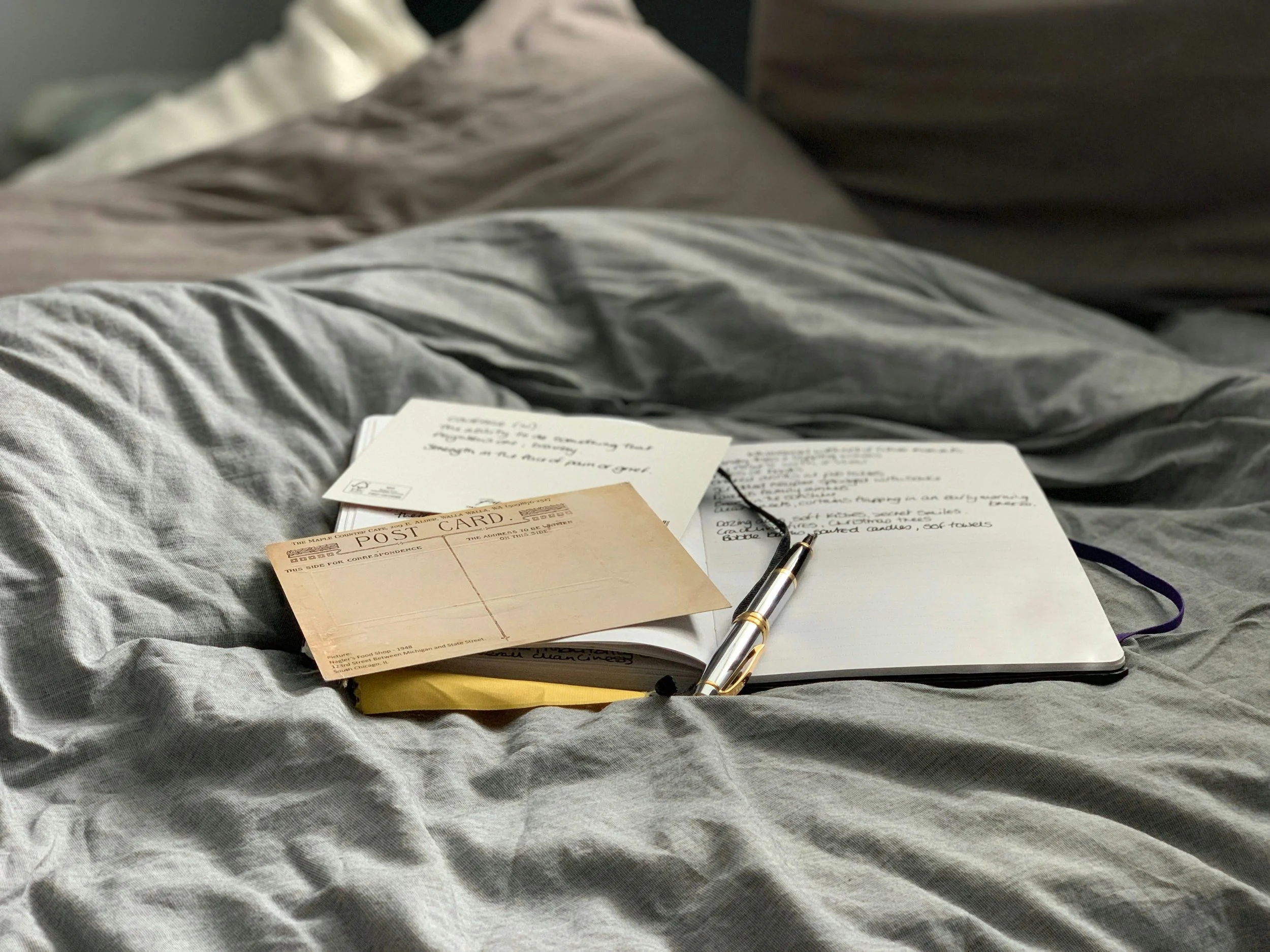How to make the shift from 'Writer' to 'Author'
The identity upgrade your visionary book invites you to step into...
If you’re feeling stuck in your writing, the issue might not be about writing time, commitment, or accountability. It could be about something deeper than that: your identity.
Identity is wrapped up in our writing in so many ways.
First, there’s what I call “writing trauma” - the kind of identity we assume about ourselves based on how our writing was judged at school. And our writing was judged. In fact, pretty much every subject we can possibly be examined in and evaluated on includes a written component. At school, we learn that our writing makes us vulnerable to external evaluation and validation.
Then, there’s the projection we have about our future selves when the book is published. Some days, that’s a wonderfully inflated idea about all the fame and fortune that comes with being a published author. And some days it’s a diminished version, filled with fear and shame for being foolish enough to say what we said…
Writing a book - especially a transformational nonfiction teaching memoir that tells your story while teaching your process so others can do it too - often brings visionary writers face to face with these deep layers of vulnerability about our identity.
Who am I to write this book?
What will people think of me when they see what I’ve said?
This is where the alchemy happens.
Photo by Becky Fantham on Unsplash
It’s the act of *writing the book* that can actually be the transformational process that the writer needs, to become the author who has written the book…
🤯
When I work with writers of transformational nonfiction, it’s usually the messy first draft where so much of the working out and alchemical self-discovery is happening in real time.
This is the part of the process where you give yourself full permission to write freely, without worrying about what anyone else will think. Easier said than done, perhaps. Here we meet the first layer of writing identity - “What will people think of me?” - or - “How will my teachers judge me?” This layer carries the weight of our conditioned expectation for external evaluation, and it can be a tough trauma to work with.
If you’re feeling stuck in this place, please remember this: NOBODY ever needs to read your first draft. Nobody. This part of the writing process is for you, and you alone.
It’s the energy of writing your story down and out.
You’re putting words onto the page as if your life depends on it. Because it does. Because, in allowing the words to move out of your body and onto the page, you’re healing and releasing a frequency you’ve been carrying that maybe doesn’t fit so well any more. As the words land on the page, you’re invited to become the witness to your own past experience - in all its messy inconsistency - with self-compassion for who you were.
You’re letting go of old stories that may have been subtly shaping your old identity, that are no longer part of who you are - or who you’re ready to become.
The first draft is a crucible for this messy magic to happen. The mirror to the parts of yourself you’d rather try to hide. On the page you get to see yourself as you are. And that’s a powerful medicine inviting deep healing and integration - rather than self-rejection.
Are you getting stuck at the first draft stage? You might be afraid to see yourself, or feeling vulnerable about being seen.
It’s the alchemy of the first draft process that transforms the writer into the person they need to become to write the redraft: the version of the book that’s really for the readers.
It’s through this integration of their own shadow material that they become the medicine keeper for their particular brand of wounded-healer wisdom. And this is what makes the book they are writing so resonant and potent.
When you live the story as you write it, your readers can’t help but to live it with you when they read it.
The secret is knowing how much of your truth and vulnerability to share with your readers in the published book.
In the last blog, I explored truth and vulnerability in Liz Gilbert’s All the Way to the River.
Some aspects of a writer’s vulnerability may be used to shock readers for dramatic effect, while others may help you to meet your readers exactly where they are: in their own truth and vulnerability. Your story becomes the bridge - or the wayshower - that can meet them where they are, help to guide them on their underworld journey, and show them that change is possible.
In becoming the guide, or the wayshower, for your readers - you also become the author, by stepping into your authority and authenticity.
Authority is not about power-over, here.
It’s about becoming the writer of your own story, the speaker of your own truth and wisdom. It’s about the integrity that you gain through owning your shadow instead of fearing and rejecting some parts of who you are.
Writing can help you to do this. It’s a powerful process of transformation, that touches first the writer, and then your readers.
First, you write for yourself.
Then you write for the world.
If you’re ready to write your Visionary Book, you can get my free training on How to Write Your Visionary Book Outline, here. It’ll help you to plan your transformational nonfiction book so that whenever you sit down to write, you’ll know exactly what to say.
